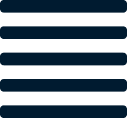Are you feeling frustrated by inaccurate forecasts? Perhaps you find yourself constantly stocking out of inventory. Or worse, holding on to too much of the wrong thing. The good news is you’re not alone. Accurately predicting demand is a challenge faced by businesses of all shapes and sizes.
Before we cover the factors that can impact forecasting and how you can accurately predict demand, let’s clear up some definitions first. It’s important to note the difference between forecast accuracy and demand variability. Demand variability is a measurement of how actual demand changes over time whereas forecast accuracy reflects how well this variability can be predicted. Variability is normal, as factors affecting demand can shift at any time. The key to forecast accuracy is accounting for this variability.
The factors that can impact forecasting:
- Stock levels
- Receipt delays
- Customer
- Seasonality
- Competition
- Macro & Market trends
- Industry
- Regulations
Accurately account for stock levels
While some may use the terms “demand” and “sales” interchangeably, it’s important to note that the two are not identical. While demand reflects the customer or market appetite for a business or product, sales reflect what is or could be actually sold. A key component separating the two is the amount of inventory actually available.
For this reason, it’s important to accurately account for stock level at any given time. When reviewing historical data, ensure you are not misled on performance based on inadequate stock levels to support full demand. The same holds true when looking ahead.
When predicting an inventory shortage, it’s important to note the degree to which demand will be unmet. Depending on your set up, this demand can be lost and affect your sales numbers or it can translate into backorders or back in stock demand that will be met at a later point in time.
It’s important to also consider what impact short stock may have on desirable goods. Will your consumer shift their demand elsewhere? This will inaccurately inflate other product’s sales. Or perhaps they’ll come back at a later time? In which case you should be prepared for the post-dated influx.
Tip: Here at Fuse we understand the frustration that comes with OOS goods - from inaccurate indicators of demand to the constant backfilling. That’s why we build our machine learning algorithms to account for these anomalies. Rest assured knowing we take care of the forecasting so that you can get your inventory levels back on track.
Just as short stock can impact sales, so does the inverse. Abundant stock levels, especially following a long out of stock period, can help capture more demand than you would otherwise see. This is especially true if you’re in the habit of liquidating your overstock through markdowns. In both cases, having too much inventory can impact your demand.
Quantify receipt delays
Stock levels should be accounted for both as inventory that is owned and saleable as well as that which is coming in. when faced with stockouts, the timing of replenishment becomes more urgent. Quantifying delays in receipts will help quantify the loss in sales. This loss in sales should be applied to your forecast estimates either as a loss, or an amount you will capture in other products or at a later time.
Get to know the customer
While historical figures will paint a picture of what happened, the true science of planning is in understanding why it happened. To do this, you must understand your customer and their behavior. How do they react when you introduce a new product? How about a new category? Do they cross-shop? If so, when? What do they do when the product they want is out of stock?
Depending on the size and structure of a retailer, these sorts of questions may be asked and answered by teams other than planning. But these insights should be incorporated into a forecast in order to understand the demand variability.
Tip:: Fuse’s proprietary new products algorithm captures your customer’s behavior. With our real-time visible data, you can easily see what changes are happening in your business as stock levels change and new products are introduced.
Understand seasonality

Similar to understanding your customer, you’ll want to understand how they behave at different points in time. The change in demand that occurs at specific regular intervals within a period of time is known as seasonality. This could refer to weeks, months, quarters, or simply, seasons.
The most obvious example is the sale of products to keep cool in the summer and warm in the winter. But for some industries, it can also refer to the halo effect of major holidays like Valentine’s Day, Mother’s Day, Christmas, and many more.
To understand seasonality, you should understand the shift in your products throughout various time periods. Measure the degree of variance to your norm to quantify what constitutes as a notable shift. Using these insights, you can adjust your predictions for different points in time.
Assess your competition
Now that we’ve covered the internal factors that can impact your accuracy, let’s take a look at the external factors. Work with the respective teams in your business to understand competitive performance and changes. This is especially important when introducing new product categories that behave differently and attract new customers.
There are several predictions you can make about your own business with the insights your competitors offer. First, try to understand revenue potential. Public companies are required to share this information, so a simple online search ought to do it. For private companies, you can get an indication of revenue potential by researching and assessing several factors like TAM, % of market share, amount of funding, number of employees, and how and where they’re advertising.

Next, you can assess the seasonality they see which can help inform your expectations. To do this, get familiar with their product line and what gets introduced when. You can also look at what goes on sale to get a sense of buying patterns. Finally, take a look at how things appear on their website. The intent of site merchandising is to sell as effectively as possible. And so you’ll be able to glean assumptions for your own business by analyzing how things are laid out.
Typically, navigation bars highlight the most important (aka the largest) categories first either at the top or the left. You can also look at category pages to see which items are defaulted to appear first. Don’t be fooled by the terms “bestseller” or “featured”. They simply mean “this is what we want you to see first before we lose your attention.”
Products featured first can mean various things, but the most common are those which bring in the most profit/revenue, are new and noteworthy, or those that need a little extra attention to sell. How do you know which one of these applies? At first glance it’s hard to tell. Doing so accurately will involve thorough analysis over a period of time. But one easy indicator is the size availability or stock levels.
If the first few items you see are all out of stock or size broken, it’s likely that the page is showcasing the things closer to depletion. If what you’re seeing first differs from what the company features most in its assets, and the product is not tagged as new, then it’s likely that you’re seeing slow selling goods. Notice the colors, patterns, and products this applies to and use this as qualitative assumptions to apply to your forecast when in doubt.
Tip: Limited edition doesn’t always mean what it says. This could be an indicator of a small buy that is expected to sell out early or it can conceal something that was accidentally underbought. “Limited Edition” sounds way better than “Sorry, we didn’t buy enough of what you wanted.”
Take macro and market trends into account
Similar to competitive insights, macro and market data can help you fine tune your forecast. There are several companies dedicated to offering this as a service like ibisworld, pwc, and statista, to name a few. Or you can also find information online through news and Google tools like Trends and Keyword Planner. Look for details like search terms or common questions to inform what your audience is asking for. Use trend projections to support or challenge your own growth trajectories.
Finally, don’t forget about the free information that comes from talking to your customers. While this may seem like a tedious task, focusing conversations on a sample size of a larger customer type can be beneficial. Conversations on a retail floor or on the phone may surprise you and help you predict shopping patterns based on consumer sentiments. You can also take a more formal route and invest time and energy into creating a focus group or doing a customer survey. While these are old school tactics, they’ve helped propel some of the largest brands we see today. They’re an antiquated strategy with a unique quality to them that may help you predict more accurately.
Dive into industry insights
Remember, an industry exists to serve a market, so it’s important to know the trends in both. Regularly review the industry landscape and note any new entrants to the territory. This will help inform who is worth keeping a competitive eye on. Assess both the winners and the losers of your industry, what their plans are for the future, and what this means for your business.
Stay up to date with regulations
Industries like food, cosmetics, and pharmaceuticals come with a host of changing regulations that can impact your demand or ability to sell. These regulations can determine approved ingredients or processes and can therefore impact the supply chains of various industries. Revenues can also be impacted by advertising regulations.
Take for example what happened with the pharmaceutical industry in the United States. In 1997, the FDA relaxed its regulations on direct-to-consumer advertising for prescription drugs which enticed manufacturers to increase ad spend and focus. This increase in advertising resulted in increases in prescription drug sales due to strong patient demands for the medicines they were being introduced to.
Monitoring the political and legal landscape globally will help you create a more sound prediction for your own business.
Forecasts are always wrong, right? Wrong.
Accuracy in forecasting has benefits beyond maintaining credibility. A precise prediction can lend itself to increased levels of profitability and protection from impeding risks. The way to improve your forecast accuracy is to be diligent in reducing demand variability.
The benefits of accurate forecasting
- Accuracy in future revenue expectations
- Improvement in the customer shopping experience
- Reduction in overstock and understock
- Ability to make data informed decisions
- Alignment across business functions
- Ability to react to market conditions
- Benchmarks for performance
.png)

.png)









.png)



%20hover.png)
.png)
hover.png)







Let us know what you think about this post
Put your comment below.